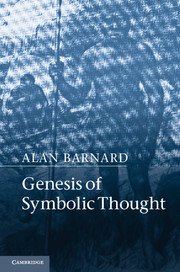1 - Introduction
Published online by Cambridge University Press: 05 August 2012
Summary
In his novel Before Adam, Jack London presents recollections in the ‘racial memory’ of his narrator:
We had no conjugation. One judged the tense by the context. We talked only concrete things, because we thought only concrete things. Also we depended on pantomime. The simplest abstraction was practically beyond our thinking; and when one did happen to think one, he was hard put to communicate it to his fellows. There were no sounds for it.
(London 1908: 34–5)Whether gesture or speech came first is open to debate, though the prevailing view seems to favour gesture, that is, gestural language rather than literally pantomime, even if the former stems in part from pantomime (see Corballis 2002, Arbib 2005). But what did early Homo sapiens do with gesture or speech? Assuming speech had evolved by the time of early H. sapiens, what did people say to each other? And above all, when did they start communicating in more intricate ways, with difficult sentences, concrete details and abstract thoughts? Is this the origin of art, of religion, of thinking beyond the self, of thinking beyond immediate needs? We all know that living hunter-gatherers spend less time in work-related activities than we food-producing peoples do (see Sahlins 1974: 1–39). Was the same not true of their, and our, H. sapiens ancestors?
- Type
- Chapter
- Information
- Genesis of Symbolic Thought , pp. 1 - 14Publisher: Cambridge University PressPrint publication year: 2012
- 1
- Cited by



